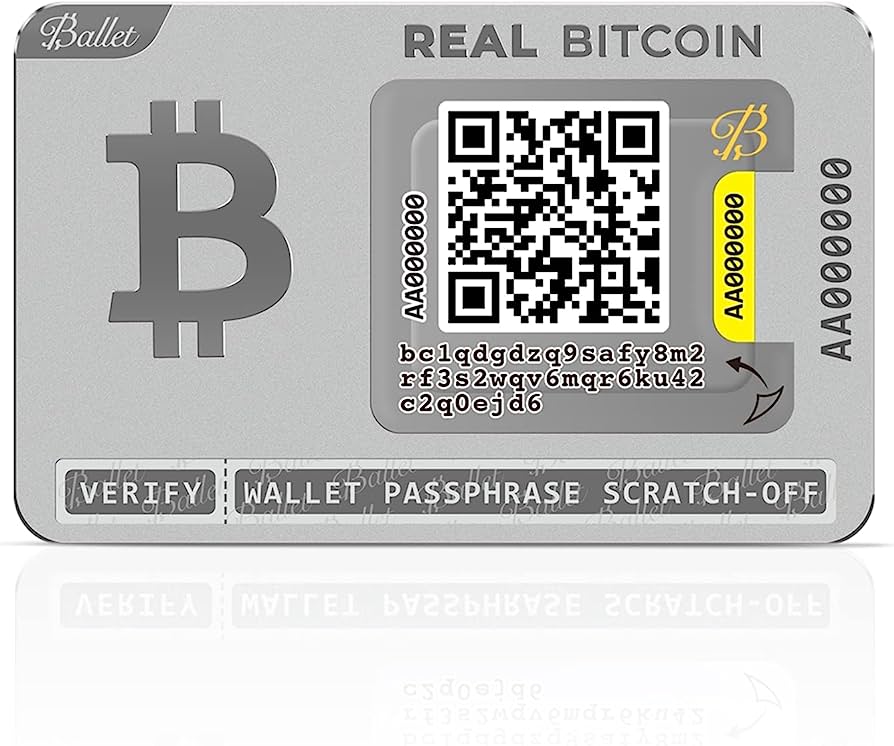Bip38 is a protocol that allows you to encrypt and protect your cryptocurrency private keys. Private keys are crucial for accessing and managing your digital assets, so ensuring their security is of utmost importance. Bip38 provides an additional layer of protection by encrypting your private keys with a passphrase.
When using Bip38, your private key is converted into another format known as Bip38-encrypted private key WIF (Wallet Import Format). This WIF format is then encrypted using your chosen passphrase. This means that even if someone were to obtain your encrypted private key, they would still need to know the passphrase in order to decrypt and access it.
The encryption process is performed locally on your device, ensuring that your private key never leaves your possession or is exposed to potential security risks during transmission. This enhances the overall security of your cryptocurrency holdings, making it significantly harder for hackers to gain unauthorized access.
It is important to note that Bip38 does not replace traditional security practices such as using strong passwords or securing your devices. Instead, it complements these measures by adding an additional layer of encryption to your private keys. By using Bip38, you can further protect your cryptocurrency holdings and minimize the risk of unauthorized access or theft.
- Installation
- Versions
- Decrypting Encrypted Key with Passphrase
- Usage
- Encrypting WIF with Passphrase and Address
- Bip38 Versions
- ScryptParams
- API
- Package Info
- References
- Why Should You Use Bip38 to Protect Your Cryptocurrency?
- Frequently Asked Questions:
- What is Bip38?
- How does Bip38 protect your cryptocurrency?
- Can you explain the encryption process used by Bip38?
- Is Bip38 widely used in the cryptocurrency industry?
- What happens if I forget my Bip38 password?
- Can Bip38 be hacked?
- Are there any alternative methods to Bip38 for protecting cryptocurrency?
- Video:
- Best Mobile Crypto Wallets for 2023: Top 5 Safest Options!
- How To PROPERLY Protect Your XRP
- How to create BIP38 encrypted bitcoin wallets
Installation
To start using Bip38 to encrypt your private key in Wallet Import Format (WIF), you need to follow these steps:
- Download the Bip38 software package on your computer.
- Install the Bip38 software by running the provided installation file.
- Launch the Bip38 software to begin the encryption process.
- Make sure you have your private key WIF handy.
- Choose the “Encrypt” option in the Bip38 software.
- Enter your private key WIF into the designated input field.
- Set a strong passphrase for your encrypted private key.
- Click on the “Encrypt” button to encrypt your private key WIF using Bip38.
- Wait for the encryption process to complete.
- Save the encrypted private key in a secure location, such as an offline storage device or paper wallet.
By following these steps, you can successfully use Bip38 to encrypt your private key and enhance the security of your cryptocurrency holdings.
Versions
BIP38 utilizes different versions to mark the encrypted private keys in order to maintain compatibility with different software implementations.
The version byte is the first byte of the encrypted private key, and it determines what operations the software should perform to decrypt the key. There are four different versions that can be used:
- Version 0: This is the original version of BIP38. It uses the EC multiply operation for key derivation and is compatible with most Bitcoin software.
- Version 1: This version uses the SHA256 hash function for key derivation instead of the EC multiply operation. It is less common but still compatible with some Bitcoin software.
- Version 2: This version uses a different encryption algorithm based on the AES-ECB mode. It is more secure than previous versions but may not be compatible with all Bitcoin software.
- Version 3: This version is similar to Version 2 but includes an additional passphrase factor to further enhance security. It is the most secure version but may have limited compatibility with Bitcoin software.
When using BIP38, it is important to choose the appropriate version based on the software you are using and the level of security you require. Different versions may have different strengths and weaknesses, so it is important to research and choose carefully.
| Version | Key Derivation | Encryption Algorithm | Additional Security | Compatibility |
|---|---|---|---|---|
| 0 | EC multiply | ECB | N/A | Most Bitcoin software |
| 1 | SHA256 | ECB | N/A | Some Bitcoin software |
| 2 | SHA256 | AES-ECB | N/A | Some Bitcoin software |
| 3 | SHA256 | AES-ECB | Additional passphrase factor | Limited Bitcoin software |
Decrypting Encrypted Key with Passphrase

When using Bip38 encryption for your cryptocurrency keys, it is important to understand how to decrypt them when needed. Decrypting an encrypted key requires your passphrase, which was used to encrypt the original key.
To decrypt an encrypted key with a passphrase, you will need to follow these steps:
- Retrieve the encrypted key: Locate the encrypted key that you want to decrypt. This encrypted key will be in a specific format that can be recognized by Bip38.
- Enter the passphrase: Once you have the encrypted key, enter the passphrase that was used to encrypt it. This passphrase is case sensitive and must be entered exactly as it was used originally.
- Decrypt the key: Using a Bip38 decryption tool or software, input the encrypted key and passphrase. The tool will then decrypt the key and output the original unencrypted private key.
- Verify the decrypted key: After decrypting the key, it is important to verify its accuracy. To do this, compare the decrypted private key with the original unencrypted key that was used to encrypt it. They should match identically.
This process of decrypting an encrypted key with a passphrase provides an added layer of security for your cryptocurrency. It ensures that only individuals with the correct passphrase can access and use your private key.
It is important to keep your passphrase secure and never share it with anyone. Losing your passphrase can result in permanent loss of access to your encrypted keys, so it is crucial to remember or keep it in a secure location.
| Pros | Cons |
|---|---|
|
|
Overall, decrypting an encrypted key with a passphrase adds an extra layer of protection for your cryptocurrency. It ensures that even if your encrypted key is compromised, it cannot be used without the correct passphrase.
Usage
To use BIP38 encryption, you need a private key in Wallet Import Format (WIF) and a passphrase.
The private key is a string of alphanumeric characters that allows you to access your cryptocurrency funds. The WIF format is commonly used to import private keys into wallet software.
The passphrase is a string of characters that you create and use as an additional layer of security. It is recommended to choose a strong passphrase that is not easily guessable.
To encrypt your private key using BIP38, you can use a BIP38 encryption tool or library. This tool will prompt you to enter your private key and passphrase, and it will generate an encrypted version of your private key.
This encrypted version of your private key is in the form of a QR code or a string of characters. It is important to keep this encrypted private key safe and secure, as it is your only way to access your cryptocurrency funds.
When you need to access your funds, you can use a BIP38 decryption tool or library to decrypt the encrypted private key. This tool will prompt you to enter the encrypted private key and your passphrase, and it will generate the original private key in WIF format.
Once you have the decrypted private key, you can import it into your wallet software or use it to sign transactions.
It is important to note that if you forget your passphrase, it will be impossible to recover the original private key. Therefore, it is crucial to choose a passphrase that you can remember but is not easily guessable by others.
Encrypting WIF with Passphrase and Address

BIP38 (Bitcoin Improvement Proposal 38) is a standard method for encrypting Bitcoin private keys using a passphrase and the associated address. This provides an additional layer of security to protect your cryptocurrency.
When you encrypt a Wallet Import Format (WIF) private key using BIP38, you add a passphrase that needs to be entered in order to decrypt the key and access the funds. This ensures that even if someone gets hold of your encrypted private key, they won’t be able to use it without knowing the passphrase.
To encrypt a WIF private key with BIP38, follow these steps:
- Generate a random passphrase that is strong and unique. This passphrase should not be easily guessable and should not be used for any other purpose.
- Obtain the address associated with the private key you want to encrypt. This is the public key hash representation of the address.
- Combine the WIF private key and the address to create an intermediate string.
- Derive an encryption key from the intermediate string using a key derivation function.
- Encrypt the WIF private key using the encryption key, generating an encrypted private key.
- Store the encrypted private key securely.
When you want to access the funds protected by the encrypted private key, you need to decrypt it using the passphrase. This process involves reversing the steps mentioned above:
- Enter the passphrase to obtain the encryption key.
- Decrypt the encrypted private key using the encryption key, retrieving the original WIF private key.
- Use the WIF private key to sign transactions and access the associated funds.
This encryption method adds an additional layer of security to your cryptocurrency holdings. Even if someone gains access to your encrypted private key, they cannot use it without the passphrase. It is important to choose a strong passphrase and keep it secure to prevent unauthorized access to your funds.
By encrypting your WIF private keys with a passphrase and the associated address, you can enhance the security of your cryptocurrency investments and ensure that your funds are protected.
Bip38 Versions

The Bip38 specification defines different versions of the encryption scheme, each with its own set of features and compatibility. These versions are denoted by a single byte prefix, known as the Bip38 Version Byte.
The Bip38 Version Byte is the first byte of the bip38EncryptPrivateKeyWif and is used to determine the encryption algorithm and other options used to encrypt the private key.
There are currently three defined versions:
- Version 0 (0x42): This is the original Bip38 version and supports both non-EC multiply mode and EC multiply mode.
- Version 1 (0x43): This version added support for the “Lot/Sequence number” option, which can be used to deter key reuse.
- Version 2 (0x44): This version added support for the “Ephemeral Public Key” option, which can be used to protect against side-channel attacks.
Each version has its own advantages and considerations, and it is important to use the version that best fits your needs and requirements.
| Version Byte | Supported Features |
|---|---|
| 0x42 |
|
| 0x43 |
|
| 0x44 |
|
As new versions of Bip38 are introduced, additional features and security enhancements may be added. It is important to stay updated with the latest version and use it to ensure the highest level of security for your encrypted private keys.
ScryptParams

The ScryptParams class is a helper class used by the this library for handling the scrypt parameters required for encryption and decryption of Bip38 encrypted private keys.
The scrypt algorithm is used in this library to derive a key from a passphrase, which is then used to encrypt and decrypt the private key. The scrypt parameters include the cost factor, block size, and parallelization factor, which determine the computational cost and memory requirements of the scrypt algorithm.
By using the bip38encryptprivatekeywif method with a passphrase and ScryptParams, users can encrypt their private keys in a way that makes them resistant to brute-force attacks. The scrypt parameters can be set to require a large amount of computational resources and memory, making it difficult for attackers to guess the passphrase and derive the encryption key.
The ScryptParams class provides methods for setting and getting the scrypt parameters. Users can customize the cost factor, block size, and parallelization factor based on their desired level of security and available computational resources.
Here is an example code snippet showing how to use the ScryptParams class:
ScryptParams params = new ScryptParams();
params.setCostFactor(16384);
params.setBlockSize(8);
params.setParallelizationFactor(1);
String passphrase = "myPassphrase";
String encryptedPrivateKey = this.bip38encryptprivatekeywif(privateKey, passphrase, params);
In the example above, the ScryptParams object is created and the cost factor, block size, and parallelization factor are set. Then, the bip38encryptprivatekeywif method is called with the private key and passphrase, along with the ScryptParams object, to encrypt the private key using the specified scrypt parameters.
API

An Application Programming Interface (API) is a set of rules and protocols that allows different software applications to communicate with each other. In the context of cryptocurrency, an API can be used to interact with different services and platforms, such as wallets or exchanges, in order to perform various actions or retrieve information.
When it comes to Bip38 and protecting your cryptocurrency, the use of an API can be particularly beneficial. By leveraging an API, you can easily integrate Bip38 functionality into your own software applications or services. This allows you to encrypt private key WiF (Wallet Import Format) securely and protect it with a passphrase.
Using the Bip38 encrypt private key WiF API, you can send a private key in Wallet Import Format along with a passphrase as parameters. The API will encrypt the private key using the passphrase, resulting in an encrypted version of the private key in Bip38 format. This encrypted private key can then be stored or transmitted securely, as it requires the passphrase to be decrypted and used.
By utilizing the Bip38 encrypt private key WiF API, you can enhance the security of your cryptocurrency holdings. This is especially important if you store or transmit private keys in a digital format, as it adds an additional layer of protection against potential unauthorized access or theft.
Package Info
The bip38encryptprivatekeywif package is a JavaScript library that allows you to encrypt and decrypt Bitcoin private keys in Wallet Import Format (WIF) using the BIP38 standard.
BIP38, which stands for Bitcoin Improvement Proposal 38, is a standard for encrypting private keys with a password. It provides an additional layer of security to protect your cryptocurrency from unauthorized access.
With the bip38encryptprivatekeywif package, you can securely encrypt your Bitcoin private keys in WIF format using a password of your choice. The encrypted private key can then be stored or transmitted safely, as the password is required to decrypt it.
The package provides functions to generate encrypted private keys, decrypt encrypted private keys, and check if a WIF private key is encrypted or not. It also supports different encryption formats, such as base58check and hex.
Using the bip38encryptprivatekeywif package allows you to add an extra layer of protection to your cryptocurrency holdings, ensuring that your private keys are safe even if they fall into the wrong hands.
References
- Bitcoin Wiki. BIP-0038: Passphrase-protected private key paper wallet import format. Accessed September 15, 2021. Available at: https://en.bitcoin.it/wiki/BIP_0038
- Cryptoslate. How to Use BIP38 to Encrypt Your Bitcoin Private Key. Accessed September 15, 2021. Available at: https://cryptoslate.com/guides/bip38-encrypt-bitcoin-private-key/
- Bitcoin.org. Bitcoin Improvement Proposals. Accessed September 15, 2021. Available at: https://bitcoin.org/en/development
- Decodein. Understanding BIP38 Password Encryption of Your Private Keys. Accessed September 15, 2021. Available at: https://decodein.com/understanding-bip38-password-encryption-of-your-private-keys/
- Medium. Securing Your Bitcoin Private Keys: The BIP38 Standard. Accessed September 15, 2021. Available at: https://medium.com/@mike_38559/securing-your-bitcoin-private-keys-the-bip38-standard-1a2e8122adf0
- Bitcoin Stack Exchange. What does the BIP38 feature actually do? What is the point of adding this feature?. Accessed September 15, 2021. Available at: https://bitcoin.stackexchange.com/questions/26001/what-does-the-bip38-feature-actually-do-what-is-the-point-of-adding-this-feature
- CipherBlade. How does BIP38 work? Understanding secure passphrase-protected Bitcoin key generation. Accessed September 15, 2021. Available at: https://cipherblade.com/blog/how-does-bip38-work-understanding-secure-passphrase-protected-bitcoin-key-generation/
- Bitcoin Magazine. Bitcoin Basics: How to Protect Your Wallet. Accessed September 15, 2021. Available at: https://bitcoinmagazine.com/technical/bitcoin-basics-how-to-protect-your-wallet
- Bitcoin Forum. What is BIP38 Encrypt?. Accessed September 15, 2021. Available at: https://bitcointalk.org/index.php?topic=3880325.0
Why Should You Use Bip38 to Protect Your Cryptocurrency?

When it comes to securing your cryptocurrency, Bip38 is a reliable and effective method. This encryption protocol allows you to protect your private keys, ensuring that only you can access your funds. By encrypting your private key with a password, Bip38 adds an extra layer of security to your cryptocurrency holdings.
One of the main advantages of using Bip38 is that it prevents unauthorized parties from accessing your funds, even if they manage to steal your physical paper wallet or memorize your private key. The password required to decrypt the encrypted private key acts as a barrier, making it extremely difficult for anyone else to access your cryptocurrency.
Bip38 encrypts your private key in the Wallet Import Format (WIF), which is widely used in the cryptocurrency industry. This means that you can easily decrypt and import your encrypted private key into various wallet applications and hardware wallets that support Bip38.
Another benefit of using Bip38 is that it provides peace of mind. By encrypting your private key with a strong password, you can store your cryptocurrency securely, knowing that even if your physical wallet is lost or stolen, your funds will remain safe.
Overall, Bip38 is an essential tool for anyone looking to protect their cryptocurrency. By encrypting your private key with a password, Bip38 ensures that your funds remain secure even in the event of theft or loss. It is a simple yet powerful way to safeguard your digital assets and take control of your financial future.
Frequently Asked Questions:
What is Bip38?
Bip38 stands for Bitcoin Improvement Proposal 38. It is a standard protocol that allows you to encrypt and protect your private keys in a password-protected format.
How does Bip38 protect your cryptocurrency?
Bip38 protects your cryptocurrency by encrypting your private keys using a password. This password serves as an additional layer of security, ensuring that even if someone gains access to your encrypted private keys, they won’t be able to steal your funds without the password.
Can you explain the encryption process used by Bip38?
When you use Bip38 to encrypt your private keys, it generates a random number called the “encryption key”. This key is XORed (exclusive OR) with your private keys to create the encrypted private keys. The encryption key is then itself encrypted using the Scrypt algorithm, using your password and a randomly generated salt. This encrypted encryption key is stored alongside the encrypted private keys.
Is Bip38 widely used in the cryptocurrency industry?
Yes, Bip38 is widely used in the cryptocurrency industry as a means of protecting private keys. It is particularly popular for encrypting paper wallets and physical storage solutions.
What happens if I forget my Bip38 password?
If you forget your Bip38 password, you will not be able to access your encrypted private keys. It is crucial to remember or securely store your password, as there is no way to recover it. Losing the password means losing access to your funds.
Can Bip38 be hacked?
The encryption used by Bip38 is considered secure, and as of now, there have been no reported successful hacks of Bip38. However, it is always important to use a strong, unique password and follow best security practices to minimize the risk of unauthorized access to your encrypted private keys.
Are there any alternative methods to Bip38 for protecting cryptocurrency?
Yes, there are alternative methods for protecting cryptocurrency, such as hardware wallets and multi-signature wallets. These methods provide different levels of security and may be more suitable depending on your specific needs and preferences.
Video:
Best Mobile Crypto Wallets for 2023: Top 5 Safest Options!
How To PROPERLY Protect Your XRP
How to create BIP38 encrypted bitcoin wallets








